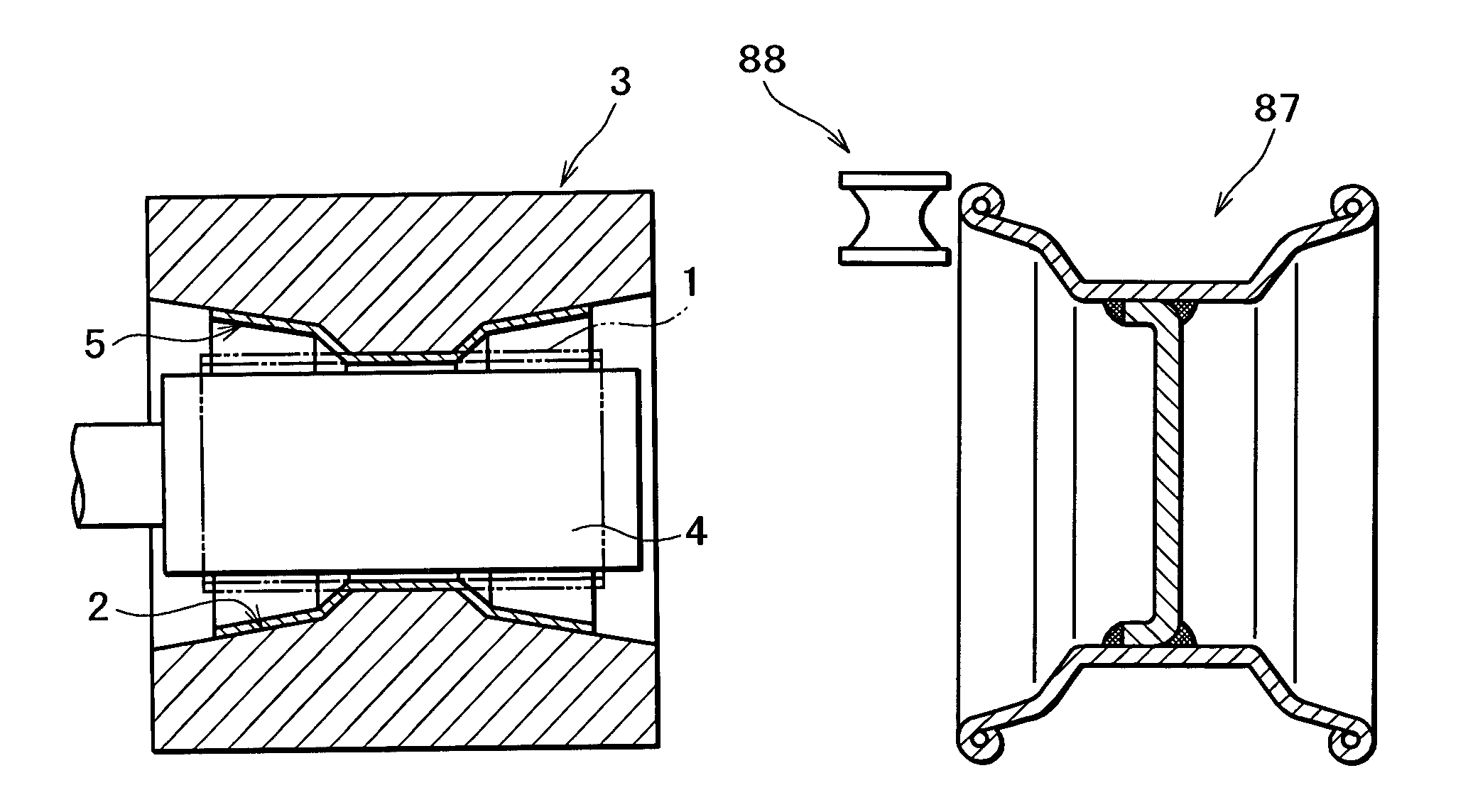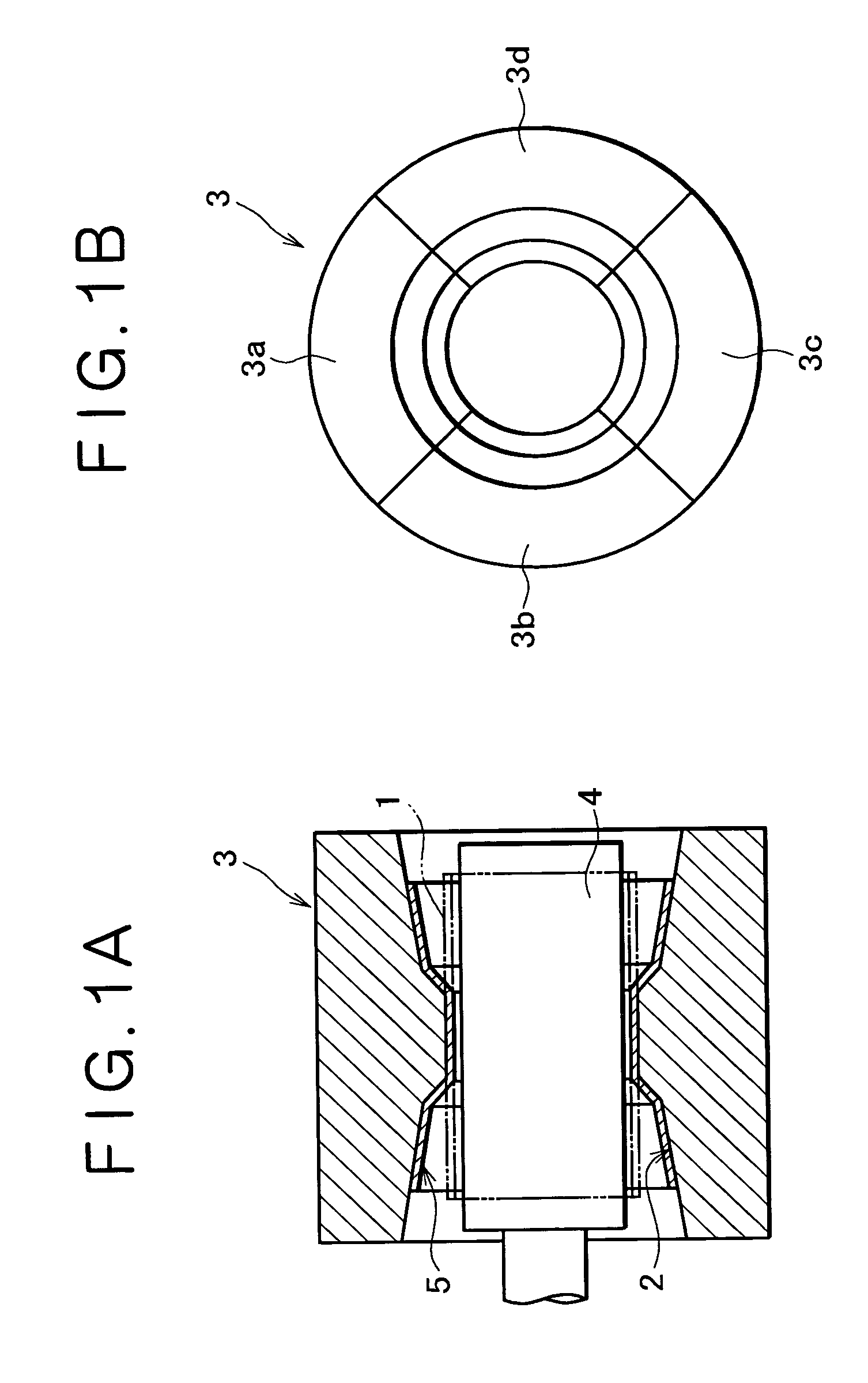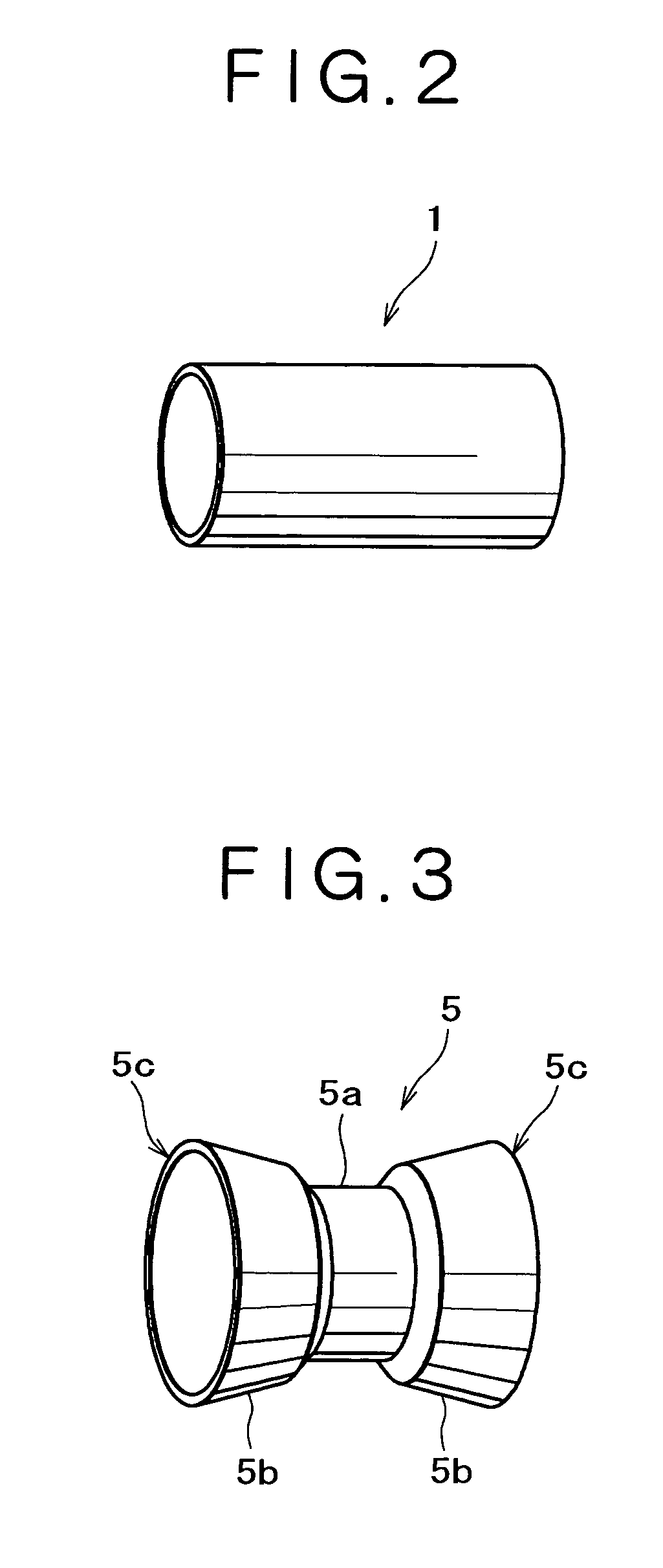Methods of electromagnetic forming aluminum alloy wheel for automotive use
a technology of electromagnetic forming and aluminum alloy wheel, which is applied in the direction of engine components, mechanical equipment, transportation and packaging, etc., can solve the problems of affecting the geometric accuracy the problem of the wheel rim being joined with the disc used, and the general weight of aluminum alloy wheel manufactured by casting. , to achieve the effect of improving geometric accuracy, high forming accuracy and large diameter
- Summary
- Abstract
- Description
- Claims
- Application Information
AI Technical Summary
Benefits of technology
Problems solved by technology
Method used
Image
Examples
working example
[0085]In accordance with the embodiment of the invention, use was made of a columnar workpiece 200 mm in inside diameter, 3.0 mm in wall thickness, and 300 mm in length, prepared from an aluminum alloy extrusion (6063 among the O-alloys), circular in shape, the columnar workpiece was set inside a metal mold for electromagnetic forming, as shown in FIG. 1, and a coil for electromagnetic forming, 198 mm in outside diameter, and 300 mm in length, was inserted into the columnar workpiece, whereupon the columnar workpiece was subjected to the electromagnetic forming at discharged electric energy of 30 kJ to undergo flaring, thereby obtaining a wheel rim. Respective sectional shapes of the columnar workpiece, and the wheel rim thus obtained are shown in FIGS. 13(a) and 13(b), respectively.
[0086]As shown in FIG. 13(b), the outside diameter of a drop part 5a of the wheel rim after the electromagnetic forming was found at 206 mm, the outside diameter of each of rim outer rim edges 5c at 305 ...
PUM
| Property | Measurement | Unit |
|---|---|---|
| diameter | aaaaa | aaaaa |
| diameter | aaaaa | aaaaa |
| diameter | aaaaa | aaaaa |
Abstract
Description
Claims
Application Information
 Login to View More
Login to View More - R&D
- Intellectual Property
- Life Sciences
- Materials
- Tech Scout
- Unparalleled Data Quality
- Higher Quality Content
- 60% Fewer Hallucinations
Browse by: Latest US Patents, China's latest patents, Technical Efficacy Thesaurus, Application Domain, Technology Topic, Popular Technical Reports.
© 2025 PatSnap. All rights reserved.Legal|Privacy policy|Modern Slavery Act Transparency Statement|Sitemap|About US| Contact US: help@patsnap.com



